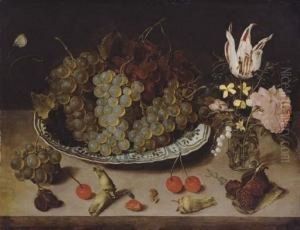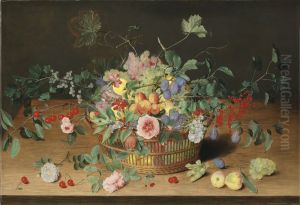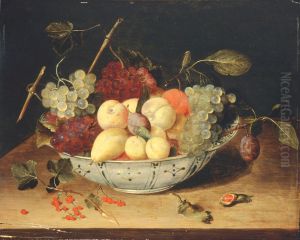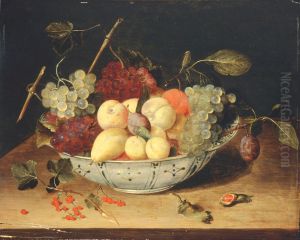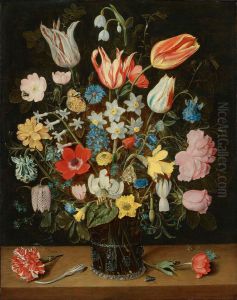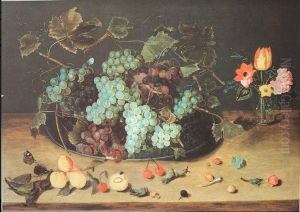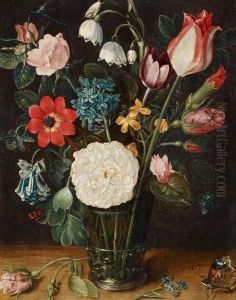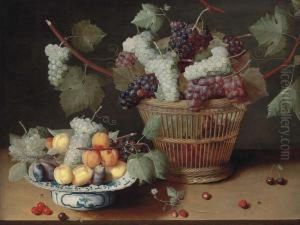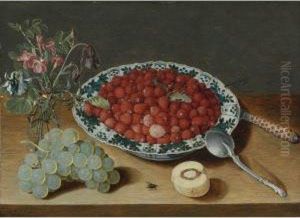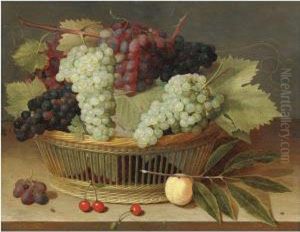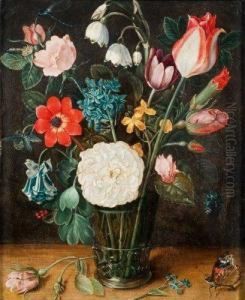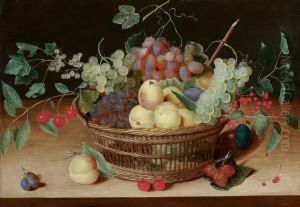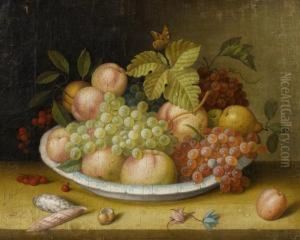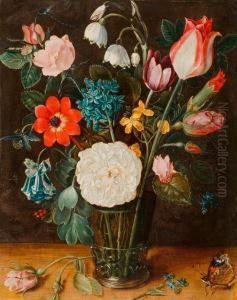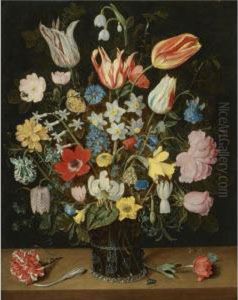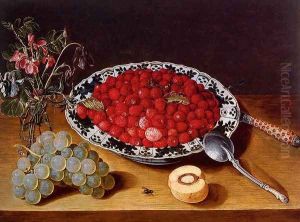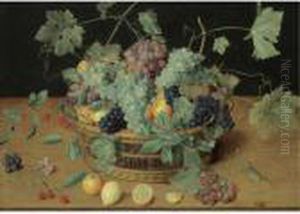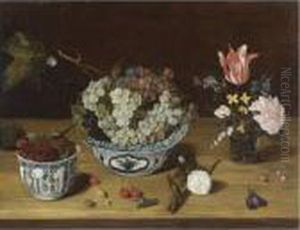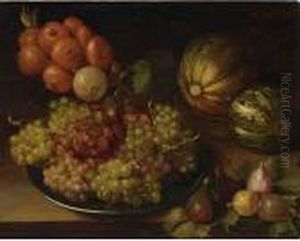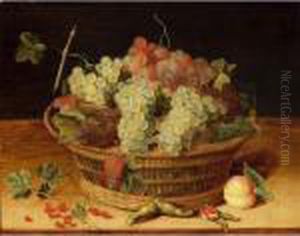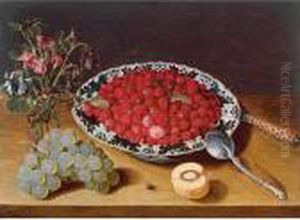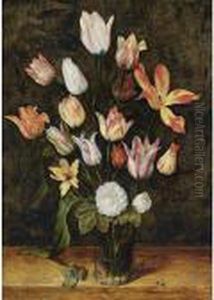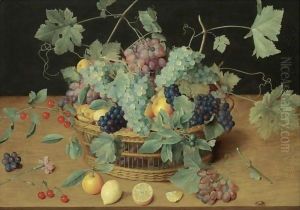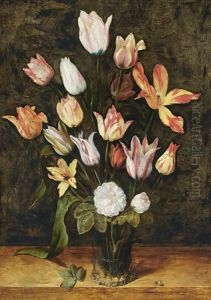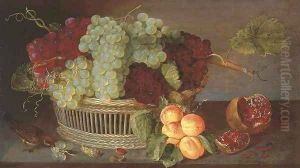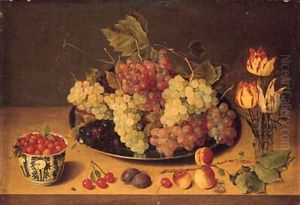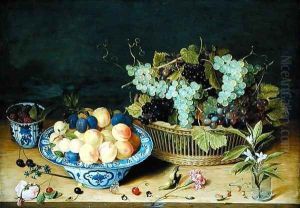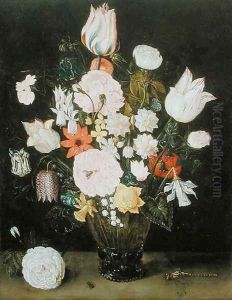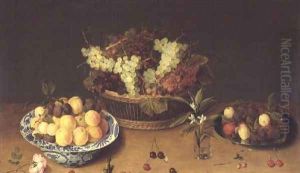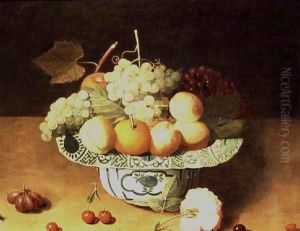Isaak Soreau Paintings
Isaak Soreau was a Flemish still-life painter recognized for his detailed and realistic compositions of fruits and flowers. Born in 1604 in Hanau, Germany, Soreau came from an artistic family; his father, Daniel Soreau, was also a painter, and his brother Peter was a painter as well. Isaak was significantly influenced by the works of his contemporary Flemish artists, particularly those of the still-life genre.
Soreau's paintings often depicted arrangements of flowers and fruits, sometimes accompanied by insects or shells, arranged on stone ledges. His works are characterized by their meticulous attention to detail and their vibrant use of color. Soreau's paintings were not just simple representations; they were imbued with symbolic meanings. Fruits and flowers, for instance, often symbolized the brevity of life and the inevitability of decay, which was a common theme in the vanitas paintings of the time.
Although his exact date of death remains uncertain, it is believed that Isaak Soreau died around 1638. His works have been preserved in various museums and collections, and they continue to be appreciated for their beauty and historical significance. Soreau's contribution to the development of the still-life genre in the early 17th century was significant, and his legacy lived on through the influence he had on other artists of his time and those who followed.
